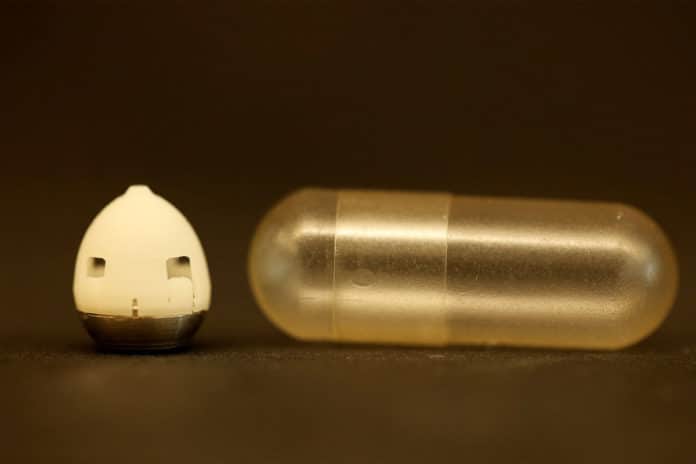Insulin is a hormone that your pancreas makes to allow cells to use glucose. When your body isn’t making insulin correctly, you can take man-made insulin to help control your body blood sugar.
For so many years, diabetes patients depend on injectable insulin to manage their condition. And for long time researchers have pursued a way to orally control insulin.
Insulin injections can be lifesaving. However, they are unpleasant, cumbersome, and very expensive for patients. So, most of the health care centers frequently delay prescribing insulin injections in favor of less-effective oral medications.
A team of scientists from Harvard-affiliated Brigham and Women’s Hospital, MIT, and Novo Nordisk has discovered a new way to bring closer to the clinic an oral formation of insulin, which can be ingested instead of injected.
With funding and in collaboration with scientists from Novo Nordisk, the team has developed an ingestible microneedle that can inject insulin into the stomach lining in a large animal model.
co-corresponding author C. Giovanni Traverso, a gastroenterologist in the Division of Gastroenterology at the Brigham said, “The work described builds and is motivated by a few critical clinical observations, including, when a drug is injected into the stomach wall that drug can become distributed through the body very quickly. Moreover, we recognize that the stomach is insensate to sharp pain and very tolerant of small, sharp objects.”
Traverso and his colleagues had gone through several challenges like navigating extremes in pH, thick mucus layers, temperature, and reliable orientation for the microneedle to inject into the stomach lining.
Their ingestible device, known as the Self-orienting Millimeter Scale Applicator (SOMA), is inspired by the self-orienting leopard tortoise. These are the species that can flip itself over when on its back. The SOMA’s shape and density distribution were optimized so that the microneedle lands in the stomach in the same location every time.
A pea-sized pill, SOMA can house a needle made of insulin and its injection is controlled by a spring that held in place by a sugar disc.
The humidity in the stomach is served by the sugar disc to trigger the microinjection, and the solid insulin needle enables delivery of enough dose of the drug. Its size and material makeup are like previously approved FDA ingestible devices.
“The scientific principles underlying the SOMA system, and the system itself, have the potential to enable oral delivery of large molecules such as peptides, proteins, and nucleic acids,” said co-corresponding author Robert Langer, Institute Professor from the Harvard-MIT Division of Health Sciences and Technology. “This discovery has the potential to transform not only drug delivery, but drug discovery as well since most current drug discovery efforts are aimed at creating small-molecule drugs that patients can take orally.”
The team tested it on a pig first and administered microneedles loaded with 0.3mg human insulin combined with poly (ethylene) oxide (PEO). Then, they measured the amount of insulin and PEO combination that made it into the blood and measured the blood glucose level in five different animals.
When insulin was injected, they found a noticeable reduction in the blood glucose levels, with similar active drug levels in the blood. They also notice that this stomach insulin doesn’t cause any abnormalities or tissue damage, no sign of distress and no changes in feeding or stool patterns.
They also noted that the SOMA worked only in animals in the fasted state. And, further research will be required to determine the chronic effects of daily gastric injections.
“While additional study is needed, the SOMA represents a platform with the potential to deliver a multitude of drugs. Our results are encouraging and justify further evaluation of this technique for the oral delivery of insulin and other drugs,” said Traverso.
Other authors of this study include Alex Abramson, Ester Caffarel-Salvador, Minsoo Khang, David Dellal, David Silverstein, Yuan Gao, Morten Revsgaard Frederiksen, Andreas Vegge, František Hubálek, Jorrit J. Water, Anders V. Friderichsen, Johannes Fels, Rikke Kaae Kirk, Cody Cleveland, Joy Collins, Siddartha Tamang, Alison Hayward, Tomas Landh, Stephen T. Buckley, Niclas Roxhed, and Ulrik Rahbek.
Results are published in Science.
